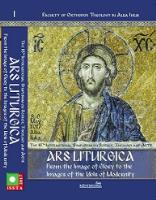'The good and bad confession' in Bulgarian art
'The good and bad confession' in Bulgarian art
Author(s): Tatyana IvanovaSubject(s): Christian Theology and Religion, Theology and Religion
Published by: Facultatea de Teologie Ortodoxă Alba Iulia
Keywords: good and bad confession; Penance; iconography; Bulgarian Revival; Western influences; prototype;
Summary/Abstract: The paper considers the advent of a new topic in Bulgarian art from the late 18th century. The iconography of “The Good and Bad confession” appears for the first time in the hermitage St. Luke in 1799 at the Rila Monastery. The author of the scene is the iconographer, Christo Dimitrov. His new iconographic model continues to spread throughout the Bulgarian Revival (18th-19th century) as part of an overall mural ensemble of didactic stories in the narthex of the temples. Depicting ‘The Good and Bad Confession’ close to subjects like ‘Going to the Sorceress for Remedy’, ‘The Aerial Tollbooths’ and ‘The Last Judgment’ raises certain problems like: Why do all those subjects occur precisely during the Bulgarian Revival and what is their origin? According to this article, the origin of ‘The Good and Bad Confession’ and its relation to the other didactic subjects is ‘Western’ – Catholic doctrines and canons of the Council of Trent (1545-1563). Because of ‘Europeanization’ in Balkans in the 18th-19th century, Western ideas and scenes have been introduced in the Bulgarian lands, already transformed in the Orthodox spirit in Russia and Mount Athos.
Journal: Altarul Reîntregirii
- Issue Year: XXII/2017
- Issue No: Suppl_1
- Page Range: 275-292
- Page Count: 18
- Language: English

